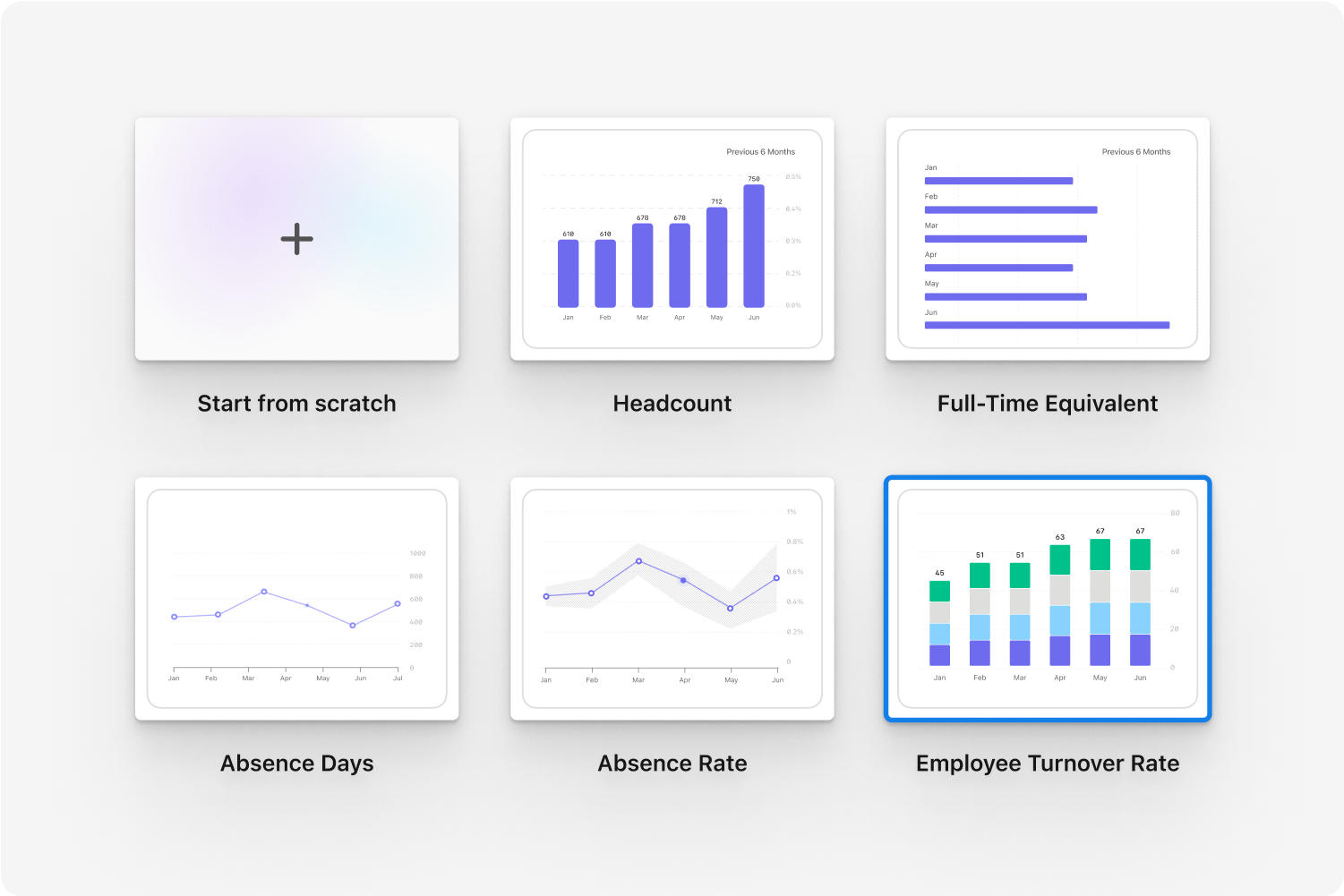Latest Blog Posts
The definitive guide to employee wellbeing

Employee wellbeing can be better for your workforce and your business. Providing employees with resources that help them maintain their physical and mental wellbeing carries a host of benefits.
Read on to learn more on how to create a great company wellness programme today.
Key facts
Employee wellbeing is a holistic view of an employee's health, including their physical, mental and emotional conditions.
A wellbeing plan isn’t simple to implement, but it’s worth it: A happy and healthy workforce produces better results in the workplace.
After implementing a plan, it’s essential to analyse the results to keep what works and make worthwhile improvements.
Contents
- 1What is employee wellbeing?
- 2Benefits of employee wellbeing in the workplace
- 3The most common employee wellbeing initiatives
- 4What is an employee wellbeing programme?
- 5How to create an employee wellbeing programme
- 6Employee wellbeing statistics in the UK
- 7Frequently asked questions about employee wellbeing
- 8Build a top-notch wellbeing programme with Personio
What is employee wellbeing?
Employee wellbeing constitutes an overview of physical, mental and emotional health and an examination of how the workplace impacts them.
Employee wellbeing is often used interchangeably with other terms like employee wellness and employee engagement, but their wellbeing remains unique.
Overall, a focus on wellbeing helps measure your workforce's overall happiness and highlights areas where you can improve.
Benefits of employee wellbeing in the workplace
Generally, your workforce will give back to your company what it provides them. So, any organisation focusing on employee wellbeing stands to benefit from increased workplace happiness. Some additional advantages you can expect include:
Improved morale: Employee wellbeing initiatives help workers feel supported as your company provides better ways to manage stress. As a result, your workforce can feel good about coming in to do their jobs, which helps them feel more engaged with the work itself.
Increased productivity: Higher employee wellbeing tends to correlate with better performance. With an investment in emotional, mental and physical health, employees have the energy and motivation to put their best foot forward with every task.
Better employer brand: Job candidates today are putting companies under much more scrutiny than in the past. A reputation for treating your employees well can widen the pool you have to draw talent from and give you higher-quality applicants.
Improved retention rates: If you treat your employees fairly and keep their stress levels low, they’ll rarely want to look for greener pastures.
Less absenteeism: Looking after your employee's mental, emotional and physical health and wellbeing means they won’t need to use as many sick days long term. In addition, fewer absences mean more consistent productivity as your workforce avoids having to catch up with their tasks.
The most common employee wellbeing initiatives
Allocating some of your limited resources for the first time can be challenging because you don’t know what areas to focus on. Below are a few of the most common wellbeing initiatives to help you find some options that work well for you and your employees.
Mental and physical health
This is one of the most basic and essential wellbeing initiatives, which can exceedingly affect an employee's happiness and wellbeing the most.
Of course, other initiatives will work to improve mental and physical health, but implementing methods to do so directly can prove more effective long term.
Some tactics companies use for improving physical health include providing healthy lunches, promoting healthier meals, or granting access to a fully-equipped gym.
For mental health, your organisation could provide 24/7 access to a support hotline or promote a guided meditation course.
Work environment
Your employee's work environment affects their mood more than most people think. Lighting, smells, temperature and more can all affect employee perspective and health. Shifting the workplace to a more comfortable design can greatly improve wellbeing.
This initiative could include unobstructed windows to let in more natural light in place of fluorescent lighting, which has been shown to reduce eyestrain and headache. You can also put plants in key areas to add colour to the employee's space and improve air quality.
Core values
A core value initiative involves finding what principles your employees believe in and examining your company’s policies from top-to-bottom to see if they match up.
People tend to care about the business practices of their workplace, and when they aren’t aligned, it can cause stress and unhappiness. Reorienting your policies can be resource intensive, but it’s worth it for a happier, more productive workforce.
Social communication
Healthy relationships of mutual respect and trust are often the key to a smoothly running business. Those fruitful connections provide resources for employees to bounce new ideas off each other, act as support systems and reduce typical workplace stress.
A social communication initiative creates opportunities for people to get to know each other. Holding parties or company events help those relationships grow organically, ensuring less friction in your workforce.
Personal employee growth
Employees' professional health also affects their overall wellbeing, particularly in younger workers. Your employees will likely seek other employment if they feel like they aren’t going anywhere at your company.
Investing in your workforce with a personal employee growth initiative builds trust between them and the organisation by demonstrating you’ll support them long-term. Regularly finding training opportunities for your employees also teaches them valuable skills to ensure they never feel like they're stuck in one place.
Physical wellbeing
Ailing employees can’t get as much done as if they were in perfect health. You can’t force them to exercise or eat healthy, but a physical wellbeing initiative can make healthier living as easy as possible.
Access to an on-site gym, providing healthy lunches and stocking vending machines with healthy snack options are common tactics. It’s also important to reinforce using sick days when needed to avoid employee burnout.
Financial safety and wellbeing
Financial wellbeing drives your employees to work in the first place and keeping them satisfied in this area can help reduce the mental and physical stresses associated with money.
Offering regular raises to top-performing employees is the simplest practice connected to this initiative. However, a financial initiative can also involve performance reviews to determine who the top performers are while encouraging other employees to improve.
Powerful HR analytics and reporting

Get meaningful insights about employee performance and progression with Personio’s people analytics.
Discover our reportingWhat is an employee wellbeing programme?
An employee wellbeing programme is a comprehensive series of benefits that builds or maintains your workforce's mental, physical and emotional health. It takes a holistic view of each worker and provides the resources needed or information needed to help in areas from stress relief, to eating healthier, to socialising and more.
How to create an employee wellbeing programme
Implementing a successful employee wellbeing programme requires careful planning and coordination. Your workforce needs to fully understand the resources available to them for them and the company to benefit fully. Below are a few tips on making an employee wellbeing programme suited for your workforce.
Start from the top
You should inform executives and other leaders about the employee wellbeing plan first thing. The programme's success depends on employees knowing about it and taking advantage of it.
Create and send out a survey
To build the most effective wellbeing programme possible, you must understand what issues your employees struggle with the most.
Sending out a survey to your workforce, with questions about their concerns and issues, is one of the best ways to get that information. Then, you can create a programme laser-focused on solving staff problems with that feedback.
Set up your goals
Figure out the reasons that you want to increase employee wellbeing. Better employee health can have numerous benefits, but launching multiple offerings all at once can leave your efforts unfocused.
You need to establish whether your efforts are meant to solely increase employee engagement, or whether you also want to reduce staff turnover and absenteeism.
The SMART goal-setting methodology is one of the most effective ways of setting up company objectives. Moreover, it can help guide you in making them:
Specific: This helps you pinpoint exactly what you want your wellbeing programme to achieve in the long term.
Measurable: This quantifies your goal so you can track progress and determine success. For example, instead of saying 'lower employee turnover', say 'lower employee turnover by X%'.
Achievable: This ensures your goal is realistic, given the resources at your disposal.
Relevant: This determines if the goal of the wellbeing programme is relevant to your organisation's long-term success.
Time-bound: This sets up timeframes to help keep progress on track and set up specific milestones to check how the programme is taking hold.
Define a measurement process pre-launch
Before you announce the wellbeing programme, ensure you have a reliable way to measure the results. While your employee's health isn’t something you can track with numbers, sending out a follow-up survey can work. But combining that with raw data like employee productivity or another value determines success, too.
Launch the wellbeing programme
Once all the preparations have been made, it’s time to launch your programme. This is likely the most crucial step because the results of a wellbeing programme often depend on how many of your workers are aware of it.
So don’t just rely on word of mouth; spread the word of your employee’s new resources across every communication channel you can, along with instructions on how to access them. And, of course, make them as brief as possible while maintaining overall clarity to ensure no miscommunication.
Measure results and adapt
The work isn’t over once everything is in place. It’s possible that there are issues with the implementation and you must measure the programme's impact to find them.
Use the measuring process you determined before launch to find where employees are still struggling, acquire the context for those issues, and adapt accordingly.
Employee wellbeing statistics in the UK
It’s no secret that employee job dissatisfaction can often lead to low productivity and high employee turnover.
While any one thing from a wellbeing programme has the chance to increase satisfaction, a holistic approach generally grants the greatest returns. With certain statistics, you can begin to see a broader picture showing why wellbeing is so important:
About one in three (33%) of workers are unhappy with their jobs.
Of employees aged 18-24, only 22% of them are happy with their work.
The average worker is willing to accept pay cuts for improved happiness.
Around 34% of employees would prefer to be unemployed than unhappy.
Around 26% of workers say a lack of support is the cause of stress at work.
Frequently asked questions about employee wellbeing
What is employee wellbeing?
Employee wellbeing refers to the condition of a worker's overall health (mental, physical and emotional) along with more nebulous factors like their happiness.
How can employee wellbeing benefit a company?
When an organisation supports their workforce to help maintain or boost its wellbeing, reciprocal trust develops. That trust can motivate greater engagement, higher productivity and lower employee turnover.
How to implement an employee wellbeing programme
You can implement a successful employee wellbeing programme with these steps:
Get leadership and executive support
Send out a survey to determine where to focus your programme's resources
Set up clear goals for the programme based on the survey’s results
Decide how you’ll measure the success of the programme
Launch the programme and spread awareness that it’s available
Track the programme's progress and adjust areas where it’s not working
Build a top-notch wellbeing programme with Personio
Wellbeing programmes are an essential component of the modern workplace — embrace it. Using people analytics and HR data reports in, you can make more informed decisions and fine-tune your offerings for a happy and healthy workforce.
Speak with an expert today to learn how Perosnio can help you manage your workplace.
Disclaimer
We would like to inform you that the contents of our website (including any legal contributions) are for non-binding informational purposes only and does not in any way constitute legal advice. The content of this information cannot and is not intended to replace individual and binding legal advice from e.g. a lawyer that addresses your specific situation. In this respect, all information provided is without guarantee of correctness, completeness and up-to-dateness.


